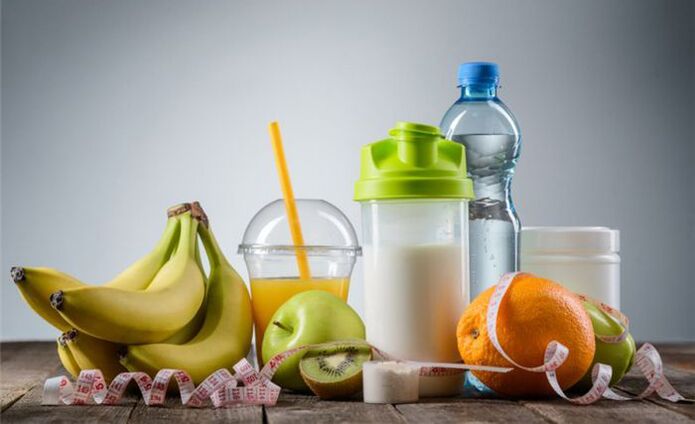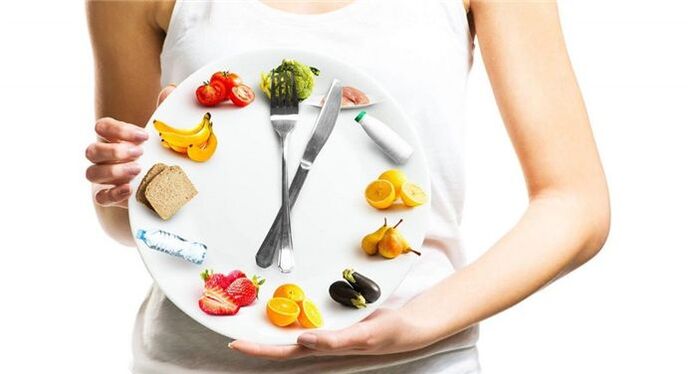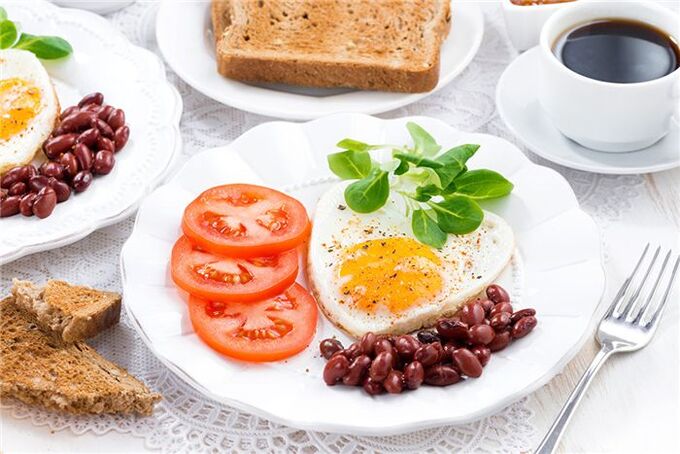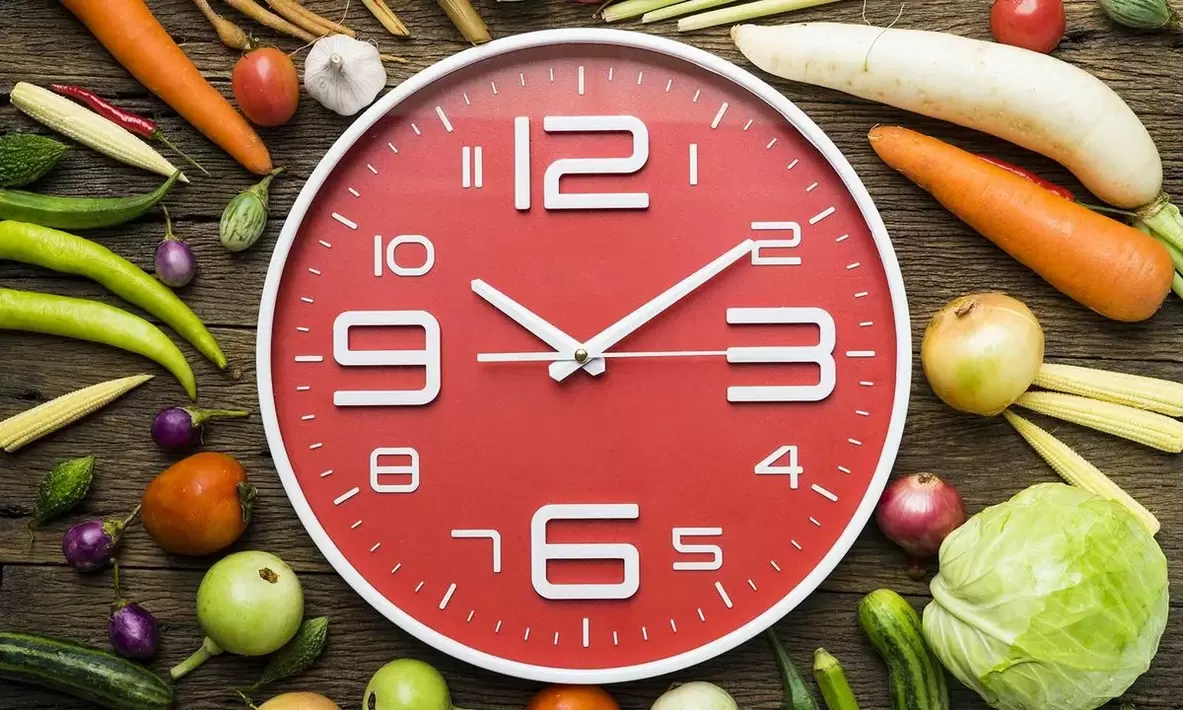
A diet for weight loss according to the proper nutrition system (PN) can be treated differently. You can criticize and find flaws in it, or fanatically adhere to it all your life, enjoying your appearance. But the fact that the PP system is effective and has helped thousands of fat people who have given up is a fact proven by time and confirmed by nutritionists.
Proper nutrition is not only about cabbage salads and steamed fish. Millions of recipes for breakfast, lunch and dinner have been created under the PP system, many of which satisfy the body’s needs and are worthy of being included in every person’s proper nutrition plan!
PP program
- Focus on the "food pyramid", according to which 40% of the dishes on your table should contain complex carbohydrates (this includes whole grain bread, all types of cereals, except semolina, as well as cereals), 35% are fresh and steamed or baked vegetables andfruits, and 20% are healthy proteins (lean meat, any type of poultry and fish, fermented milk and dairy products). The remaining 5% can come from fats and sugar.
- Combine meat with vegetables and fruits.
- If you really want it, then you can have a little sweet. But do not exceed the permissible limit of sugar-containing products per day - 5 teaspoons. Better yet, replace sugar with honey. All desserts can be consumed only in the first half of the day in order to have time to burn the calories received before the evening.
- Make sure that your body gets enough protein (a person needs at least 100-150 g per day). Protein is a building material that renews cells and maintains muscle performance. If you give up meat and poultry, you should consume plant proteins, which are present in large quantities in legumes, nuts and soy.
- Avoid processed foods, fast food and sauces, as well as canned goods. Sugar and salt are added in large quantities even to ketchup.
Deadlines
Each diet can only be used for a limited period. Once results are achieved, you should switch to a healthy diet. If you start sticking to proper nutrition, you won’t have to give up your favorite and unhealthy foods at all. But you should strictly control the time and volume of consumption of such products, and also compensate for their calorie content with physical activity.
Proper nutrition is so healthy and beneficial that you can and even need to adhere to it throughout your life in the name of a slim figure and healthy appearance.
It's time to create a menu for yourself!
What kind of nutrition can be called correct?
Proper nutrition (sometimes called healthy) involves eating natural foods that only benefit the body. The diet of a person who is planning to eat according to this principle should include dishes that contain the required amount of nutrients. We are talking about the following components:
It is necessary to count them to ensure the daily requirement. It is also important to follow other rules that make nutrition correct. Thus, fast food, processed foods, carbonated drinks and other harmful foods should not be included in your diet. It is also recommended to limit the amount of salt, exclude fried foods, steam or boil, stew, or bake dishes. You should eat food at the same time every day.
How to create a menu for the week
The peculiarity of proper nutrition is that it does not imply adherence to a strict menu. It must be compiled taking into account the characteristics of the person and his food preferences. The main thing is to follow the basic principles of combining products. We are talking about the following rules:
- breakfast should be rich in carbohydrates;
- dinner should contain a large amount of carbohydrates;
- Every meal should include foods containing fiber (vegetables, fruits, bran);
- if you want to eat sweets, then this should be done only in the first half of the day;
- It is important to distribute calories correctly.
Typically, people who adhere to proper nutrition create a menu for the week in advance, and then simply prepare dishes in accordance with it. Below is an example of such a diet, in which the necessary products have already been selected. Of course, changes can be made if, for example, a person does not eat a certain type of food.
How to make a meal plan for weight loss
Individual planning of your own menu for the day, week, month will help you develop the habit of eating properly and in a strictly defined manner. Fractional - at least 3 times, and preferably 5-6 times a day - the diet is the key to food discipline. There is no need to break or rearrange your usual daily routine. Rely on your lifestyle when creating a plan.
Meal regimen for "early people" (people who wake up, for example, at 6: 00 am and go to bed at 10: 00 pm)
- Have breakfast at 7: 00 am
- At 10. 00, have a second light breakfast
- At 13. 00 go for lunch
- 16. 00 time for afternoon tea
- Have dinner at 19. 00
Dietary regime for "night owls" (people who get up after 9. 00 am and go to bed around 00. 00 am)
- Have breakfast at 10. 00 am
- At 13. 00 time for lunch
- At 15. 00 it's time for lunch
- At 17. 00 go for afternoon tea
- At 20. 00 it's time for dinner
Thus, adjust your meal schedule to suit your daily routine.
Main recommendations
- You should have breakfast one hour after getting up
- Drink 250 ml of warm plain water in the morning on an empty stomach.
- Allow 2-3 hours between any meals
- have dinner earlier or no later than two hours before bedtime
To properly lose weight, you need to keep track of the calories of all foods you eat. To do this, get a notepad or a special application on your phone and make notes even about the amount of water or juice you drink.
What is important when creating a menu
- When planning your weekly menu, immediately prepare a grocery shopping list. And immediately decide on what day you will cook what. On certain days, for example, chicken and fish should be included. On one day you should have a light vegetable salad for dinner and a hearty beef steak for lunch, etc.
- You shouldn't skip breakfast, even if you don't feel hungry. Every breakfast should be balanced and nutritious - 50% of the daily carbohydrate intake should be at breakfast, leave 30% for proteins, and 20% for fats.
- Dinner should contain mainly proteins. For example, low-fat cottage cheese, baked chicken or steamed fish.
- Afternoon snacks and second breakfasts are proper and balanced snacks between main meals. But they should not turn into a full meal. Prepare fresh fruits for a snack (you can have one banana, 150-200 g of grapes, one large apple), fresh or boiled vegetables (cabbage, tomato, carrots, radishes, etc. ), dried fruits or nuts (the latter should be unsalted and not in volume). more than 30 g per dose).
- When counting calories, subtract those burned during physical activity. For example, if you are going to walk around the city all day or have planned long-distance cyclocross, increase your diet for that day. Plan for the right amount of carbohydrates and proteins, and have a good breakfast before leaving the house.
- Drink plain drinking water - not chilled or boiling water (it cleanses the gastrointestinal tract and starts metabolic processes). Green tea is good for those losing weight (it speeds up metabolism, replenishes the body's need for antioxidants and perfectly suppresses appetite).
- You can drink coffee, but drink high-calorie variations (lattes or cappuccinos) only before lunch.
Mistakes of losing weight
- Breakdowns for sweets and starchy foods (they should not be completely ruled out, but dosage the intake so as not to violate the norm of daily calorie intake).
- Fried and smoked. Such heat treatment of food is possible if you fry without oil, over an open fire, and smoke for no more than 20 minutes in a natural way (not with artificial smoke).
- Prefer raw vegetables and fruits to boiled and baked foods, consume a maximum of all types of greens.
- Heavy dinner with large portions. Boil or stew meat or fish, be sure to add a fresh vegetable (for example, 200 g of poached beef with one fresh cucumber).
- Frequent drinking of alcohol. It should be avoided, as it is quite high in calories and can provoke a strong feeling of hunger.
- You should not drink water while eating. The same goes for tea or juice. Brew a glass of tea only an hour before meals and half an hour after.
- Be careful with salt, seasonings and sauces. All this greatly stimulates appetite and can lead to irregularities and overeating.
- Meals should not be skipped. Always have a bag of nuts, water with lemon, or a handful of raisins with you. This way you will curb your appetite and avoid overeating during a delayed meal.
Sample menu for the week
First day
Morning meal: rice 200 g, butter 10 g, one banana or one apple, black coffee.
Snack: dried gray bread, boiled egg, tomato.
Daily meal: steamed mackerel 200 g, Chinese cabbage salad with peas and sunflower oil 180 grams.
Second snack: low-fat cottage cheese 120 g with a spoon of 10% sour cream, green apple, 200 ml of tea.
Evening meal: boiled vegetables 220 g, baked piece of beef 140 g
Second day
Morning meal: a sandwich made from a piece of whole grain bread, creamy cottage cheese and a plastic cucumber, 100 g grapes, tea or coffee with honey.
Snack: cottage cheese 50 g with a teaspoon of honey.
Daily meal: meat broth 200 g, fresh Chinese cabbage salad with cucumber and tomato, seasoned with lemon juice.
Second snack: a red apple and one kiwi, green or herbal tea.
Evening meal: lean beef 200 g, two fresh cucumbers.
The third day
Morning meal: boiled oatmeal without milk - 210 g, a spoonful of honey, avocado and unsweetened coffee.
Snack: pine nuts or walnuts 60 g, green apple, tea, lemon slice.
Daily meal: brown rice 150 g, the same amount of steamed vegetables.
Second snack: casserole of cottage cheese, semolina, 150 g banana, herbal tea.
Evening meal: 200 g peeled seafood, two cucumbers and one tomato.
Fourth day
Morning meal: oatmeal with milk 200 g, fresh raspberries, blackberries, blueberries or strawberries - 100 g.
Snack: 100 g low-fat unsweetened yoghurt, a teaspoon of honey and freshly brewed black coffee.
Daily meal: baked low-fat fish 250 g, sauerkraut 130 g.
Second snack: salad of tomatoes, cucumbers, seasoned with low-fat sour cream 200 g.
Evening meal: 200 g baked chicken without skin, sprinkled with 30 g Parmesan, plus two cucumbers.
Fifth day
Morning meal: 200 g of mashed potatoes in water with the addition of 30 g of butter, one boiled egg, one cucumber.
Snack: green tea and two kiwis.
Daily meal: mushroom soup with barley 260 g, dried slice of bread or crackers and 10 g of cheese.
Second snack: homemade casserole of cottage cheese, raisins and yogurt 150 g.
Evening meal: baked hake 200 g and seaweed 100 g.
Sixth day
Morning meal: a beaten omelette of two eggs and 150 ml of milk, freshly brewed black coffee.
Snack: grapefruit or pomelo.
Daily meal: baked potatoes 150 g with champignons 100 g, baked chicken 70 g.
Second snack: kefir or low-fat drinking yogurt 200 ml, one green apple.
Evening meal: low-fat cottage cheese 150 g without added sugar, two apples baked in the oven.
Seventh day
Morning meal: millet porridge on water 200 g with butter 30 g, a glass of black tea without sugar.
Second morning meal: kiwi and banana.
Daily meal: steamed vegetable casserole + 20 g cheese - 250 g, boiled chicken fillet - 100 g.
Second snack: boiled shrimp 200 g, carrot or tomato juice 200 ml.
Evening meal: steamed fish cutlet 150 g, boiled white rice 100 g, one tomato.
How to start eating right
The acceleration of the pace of life and the products presented in abundance on store shelves, as well as in fast food chains, products imposed by advertising, convenient to use, but not useful, and often harmful, make many people think about how to start eating right and include this item inyour daily schedule.
In addition to knowing how to most effectively portion and balance your menu, it's helpful to consider the psychological aspect and ensure you have the right approach to changing your eating habits. Whatever the purpose of the diet - to realize the desire to lose weight or improve well-being, it is very important to form the right attitude towards the problem.
Therefore you shouldn't:
- expect to instantly improve your health, change your eating preferences and habits completely at once;
- Spread your attention on several complex tasks at the same time;
- abruptly give up all usual foods at once;
- elevate harmonization of diet to an end in itself and subordinate the entire way of life to it;
- Paying attention to thoughts about food is better to direct the energy of the mind in another useful and important direction.
Why you need to eat right
Compliance with the daily routine and diet, coupled with the absence of bad habits and adequate physical activity, are the main conditions for maintaining the body in optimal condition. Very often these simple truths are not remembered until health problems begin, depriving a person of the opportunity to enjoy the everyday pleasures of life.
For those who are already faced with the problem of lack of energy and physical strength, excess weight, poor sleep, deterioration of the skin and hair, or any other of the wide range of disorders provoked by an unhealthy lifestyle, as well as those who are thinking about preventionthem in advance, it will be vitally important to make a decision to switch to harmonious food, follow it in practice, without delay.
The basis of a healthy lifestyle has been and remains proper nutrition. Since it is the substances that enter the body with food that serve as the main source of strength and raw materials for the tissues of our body.
A necessary start would be to competently prepare a diet for the day.
Rules for choosing a diet for the day

Creating a balanced menu is quite simple. Having decided to improve your health and correct your figure, you need to take care of the quality, quantity and timing of food intake. Food should be fresh, the diet varied and correctly distributed throughout the day.
- It’s better to start eating more often and in small portions (not three times, but 4-6).
- Do not eat heavily before bed.
- Include vegetables in every meal.
- Drink more plain still water.
- Reduce the amount of simple carbohydrates.
Your decision to stick to a healthy diet will be rewarded with improved health, overall well-being, weight loss and strengthened immunity.
The correct diet for the day should correspond to a pattern in which the first meal is denser than all subsequent meals.
For beginners, it is important to gain an understanding of the substances that each body needs for proper functioning and their ratio. The key to a balanced menu is the correct combination of proteins, fats and carbohydrates, as well as the presence of microelements such as magnesium, calcium, potassium, various vitamins and iron.
Start your day with a delicious and healthy breakfast

The first thing that enters the body should be plain, not cold water (if the acidity of the stomach allows, with the addition of natural fresh lemon juice). This will help invigorate and prepare the digestive system for further functioning. It is also useful for quickly removing waste products from the body, losing weight and improving the condition of the skin.
A glass of water should be consumed correctly - about thirty minutes before meals, slowly, in small sips.
Contrary to popular belief, a nutritionist's advice regarding the morning meal concerns the exclusion of sweets from it. This is due to the fact that when receiving one portion of glucose, the body will require the next one a little later, when the sugar that arrived first is processed by the digestive system.
How to choose a healthy lunch
According to nutritionists, a meal in the middle of the day should contain from 25 to 50% of the total energy value of the daily diet.
To make your lunch as healthy as possible, you should remember the following recommendations:
- the beginning of the meal is soup;
- drinking hot (except cold) drinks;
- the interval between lunch and the previous meal should be at least 2-3 hours;
- It is useful to balance a very hearty lunch with a light dinner.
Under no circumstances should you neglect a full lunch.
What's best to eat for dinner?
An evening meal with a balanced diet contains a minimum of calories. Eating carbohydrates should be avoided. However, this meal should not be completely excluded from the regime - this provokes serious disturbances in the functioning of the digestive system.
You can give preference to natural yoghurts, steamed poultry dishes, cottage cheese casserole, and seafood.
A good choice would be a protein omelet or a small portion of legumes - beans, lentils, chickpeas.
The key to success will be the combination of foods rich in nutrients and their low calorie content.
How many calories and minerals should the body receive?
The calories needed by the body are calculated using formulas that include data on the following parameters of a particular person:
Special attention should be paid to the current state of the body, professional stress, lifestyle and the goal that a person who decides to eat right sets for himself. If he is driven by the desire to lose weight, the normal indicators are reduced by 20%; if he strives to gain muscle mass, they are increased by the same amount.
Average standards suggest women consume from 1000 to 2000 kcal per day, men – from 2500 to 5000. However, accurate calculations must be made individually.
What foods should you avoid when creating a healthy diet?

Adjusting the body to a new nutritional system takes time, like forming any habit. If you can’t eliminate all junk food at once, you should do it gradually, allowing yourself something from the prohibited list about once a week.
This will help relieve stress and have fun. However, this weakening should then be compensated for by increasing the amount of vegetables, fruits, and clean drinking water.
A list that will help limit harmful foods in your diet:
- rich, yeast-based and additive-containing baked goods, loaves and wheat bread (it would be correct to give preference to whole grain and rye without yeast);
- confectionery;
- sausage products;
- mayonnaise and sauces based on it;
- canned meat and fish;
- smoked and salted meat dishes;
- egg yolk;
- foods high in animal fats;
- alcohol;
- fast food, semi-finished products;
- carbonated drinks, especially sweet ones, containing dyes and flavorings.
It is especially important to understand the importance of freshness of products and prepared meals. Even healthy foods can be harmful if not prepared correctly. Always prefer boiled and steamed to fried.
An example of the correct menu for the day
Everyone's taste preferences are individual. Moreover, it is difficult to create a menu correctly for a long time. However, once you take the path of correcting your diet, you will gradually learn many recipes and new dishes, and you will be able to choose the ones that are most preferable for yourself.
Approximately a day's food might look like this:
- boiled egg with buckwheat porridge for breakfast, natural cocoa as a drink, you should also add a fresh apple or orange;
- for lunch - pickle soup, steamed, boiled or baked chicken meat without adding fat, preferably fillet, a piece of rye or rye-wheat bread, green tea with honey or lemon;
- during the afternoon snack you can eat cottage cheese with fresh berries or fruits;
- A great dinner would be some lean meat (uncooked) and vegetables.
For snacks, you can turn to vegetables and fruits; in case of extreme hunger, you can turn to nuts and seeds. We should not forget about the daily consumption of plain water (about 2 liters) necessary for health.
Weekend
Some people believe that on weekends they can allow themselves to deviate from their diet and eat unhealthy foods that were not present in the diet on other days. This opinion is erroneous, since such an act can negate all the benefits of the previous menu. Of course, you can sometimes afford something that is not very useful, but in small quantities. Heavy food can be consumed on holidays, but not every weekend.
The menu for Saturday in proper nutrition mode may look like this:
- Breakfast includes oatmeal and baked apple. You should use tea as a drink. It is important to understand that you should not put sugar in tea. If you want to sweeten the drink, it is recommended to use honey.
- Second breakfast – yogurt and banana.
- For lunch you can prepare chicken soup with vegetables. Experts recommend choosing fish as a second course. Salad – vinaigrette. The drink is compote.
- For an afternoon snack, you can eat yogurt and add nuts to it. You can choose dried fruits instead.
- For dinner, a great option would be ham and vegetable stew. The drink is tea.
On Sunday, you can treat yourself to cottage cheese casserole for breakfast. It should be seasoned with honey. You can also eat toast with tea. For second breakfast you can choose yogurt and crackers. Lunch consists of borscht, chicken cutlet with buckwheat, compote. An excellent option for an afternoon snack, as usual, would be cottage cheese with the addition of dried fruits. For dinner, it is recommended to eat boiled veal and vegetable salad.
What to do if you don't have enough time to cook

For those who want to eat healthy, the key to success is consistency. Only long-term lifestyle changes can bring real benefits. Often the modern pace of life of a working person does not leave time for much. Under no circumstances should you give up your decision to become healthier or your desire to lose weight.
The beginning of the journey is always the most difficult, we very often leave achieving what we want without starting, only because of limited time and energy resources, but there are professionals who are ready and willing to provide competent assistance.
If you don't have time to take care of your food, you can order ready-made meals for delivery, fresh and properly balanced. It’s very easy to choose food for yourself from the section that matches your goal (lose weight, keep fit after a diet, gain muscle mass, etc. ). A menu is offered for the calendar and work week, with a detailed description of the composition of the products and the nutrients in them.
Upon your request, we will deliver healthy, fresh food that you can eat at work and at home. Comfortable service conditions will allow you, without wasting time and effort in the kitchen, to enjoy a variety of balanced dishes, many of which you might not soon prepare yourself.
The opportunity to use the services offered by respected and competent specialists will eliminate the need to study numerous videos, view pictures and read articles in order to expand your culinary range.
There is no reason to put off starting your plan to eat healthy. Do it today.













































































